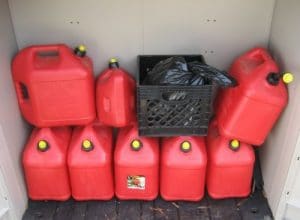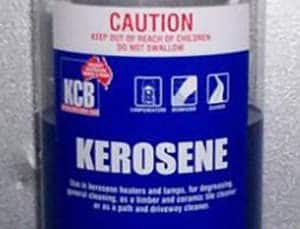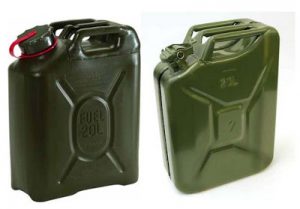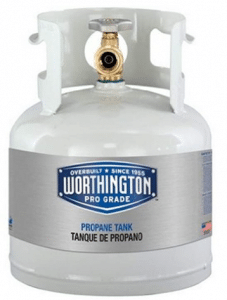The knowledge concerning long-term fuel storage is a must-have for all preppers worldwide in 2023. It is common sense that complete emergency preparedness requires smart solutions, and every prepper should learn how to store gas, butane, diesel fuel, firewood, oil, kerosene, unleaded fuels, and other kinds of fuel to be able to use their vehicles during a survival situation. Read the article and you will learn more about long-term gasoline and other fuels storage.
When you prepare for survival, chances are you think of food, shelter, some survival kits, and a survival book. Rarely does a thought of long-term fuel storage crosses the mind of preppers. It should actually since fuel gives you choices to make, and in an emergency, such opportunities are like gold.
I would recommend storing the following fuels:
- Firewood
- Gasoline
- Diesel Fuel
- Kerosene
- Propane
These fuels can keep you warm and help get your food done and ready; they provide electricity to run any home utensils, as well as fuel your bug-out vehicle to move around the area.
What can be easier than chopping down a few trees or filling up some plastic fuel cans? Well, if I were you, I would not be so quick on my feet for that. And in this article, I will tell you what fuels are the best to store and how to do it safely and properly, so it does not go bad fast.
Diesel

Sure, if you fall into the category of diesel-powered bug-out vehicle owners, you need to store diesel fuel. Nowadays, you can find Ultra Low Sulfur Diesel Fuel (or ULSD, for short) on the market. Previously, people could have bought it years ago, and it is still could be fine. So, the storage life of diesel was quite long.
At the moment, though, such diesel fuel has a shelf-life of around half a year due to changed formulations. For sure, you can add fuel stabilizers to extend the storage life, just like with gasoline, or you can perform a nitrogen blanking process.
To do so, you inject the nitrogen into the diesel fuel storage tanks while you use the fuel, so basically, you replace the air that came with a space with nitrogen. This way, no microorganisms can grow since they need oxygen and water molecules.
All in all, I recommend storing diesel fuel rather than natural gas as a long term fuel storage option since it is unlikely to ignite by accident.
Kerosene

If you need a versatile fuel, then kerosene is the best option there is. In comparison to diesel or gas, you can use it for practically anything – cooking, heating, and lighting. And handling kerosene is way easier than gas storage. It will not explode since it belongs to non-volatile fuels, unlike gas and diesel fuel.
Kerosene might be the best source of energy. It is 50% more energy-full than propane. It has a long shelf-life that can be measured in years and not months.
Moreover, there are no legal restrictions for storing kerosene in large amounts, which is why it is easily available at any local stores at a reasonable price value.
Propane
Propane is one of the fuels with a long shelf-life that is easy to store in large or small quantities, depending on your needs. Propane, just like kerosene, is a versatile fuel that can be used to run your emergency generator or lawn equipment or to fuel your lights and heaters.
Propane gas tanks come in various sizes, so you have to check with your state’s storage regulations before contacting a supplier. Though storing propane in large quantities might be tricky since it has hard to come by large enough gas cans.
Firewood

- you can find it basically anywhere.
- It does not cost a fortune.
- It is easy to store.
- It is legal to store as much as you want to.
- And if you are out of electricity, it provides you with heat and hot food on a plate.
However, you must keep in mind a few things before diving into chopping some trees down for your fireplace.
The first thing is the burning properties. There are two common wood types (softwoods and hardwoods) that are complete opposites in their burn properties.
Softwoods burn fast and usually with an acrid smell. They do not give out a lot of heat, just the ash. And you need to store them in abundance since they perish fast.
Hardwoods, on the other hand, are excellent burners. With burning slowly, they have high heat output and less pungent smell. They also have a longer shelf-life than softwoods.
The second thing is firewood seasoning. You might need some reliable splitting ax for the purpose. After you have chopped down a tree and split it into billets, you have to store it in a dry location for no less than six months before you put it into use. Of course, there are no complications of using the firewood that was not seasoned except for having low heat output and more soot in chimneys. The latter is the main cause of chimney fires.
All in all, hardwood firewood is the best first long-term fuel.
Gasoline

Only 1 vehicle out of 30 runs on diesel, and the rest use gas. So, imagine that there will be lines of cars with panicking drivers wanting to refill their fuel tanks, and gas stations will go empty in a flash when an emergency comes. Does not it make you want to have your own stored gasoline to bring you fast to your bug out location?
I am sure you will agree that a few gallons of gasoline storage will not be a burden after all. However, this type of fule is probably the trickiest to store on a long-term basis due to its short shelf life and fast deterioration through time (that is, of course, if you use no fuel stabilizers).
So there are two ways to always have gasoline at hand. You can either follow the rules to prolong its shelf-life or find a rotation system that will work for you.
Long-Term Gasoline Storage
Storage conditions play a vital role in keeping your fuel from going bad way faster than you expect. To increase gasoline’s shelf-life, you can find a fuel stabilizer, like PRI-D, PRI-G, or STA-BIL.
The fuel stabilizers have to be added into the storage tanks with gasoline in chunks over a certain period of time. They make the fuel keep its ignition properties on the high.
But make sure that at least once a year every year you add a fuel stabilizer into the storing fuel and mix it well, then your next year you will be ready for any emergencies to come.
Gasoline Rotation System
If a fuel additive is just too much for you, you can rotate your storing fuel and create a kind of fuel system.
I recommend using a set of gas containers (small, medium, large) this way, you pout the gas from a storage container into your vehicle and then refill this container with gas from your local gas station.
To solve the deterioration issue and ensure the storage life is highest, it may be best to refill gas containers once in six months.
Amount of Fuel
Here, your bug out location is the main factor to keep in mind. How far is it from your home? My advice is to store 25% more than it takes to get to your bug out location with no need to drive through any gas stations.
For instance, if your vehicle needs around 15 gallons of fuel for a mile and 300 miles to your bug out location, you would have to have 25 gallons of fuel in the storage tanks.
Tips
The amount of gasoline you can legally store in one location at any given time may vary depending on the location where you reside. So, check the laws for that before you start storing fuel.
Since there are OSHA regulations, you have to buy gasoline containers for fuel storage.
Here’s a video from The Prepper Project on how to store gasoline:
Here are a few additional but vital tips to fuel storage:
- Get educated on the topic of fuel storage beforehand.
- Gas has to be stored in a dry place, away from direct sunlight, and at a mild temperature (70 degrees Fahrenheit would be enough).
- You can also add some ethanol blends to avoid an accidental explosion.
- Storage tanks have to be put in a separate shed with no access to children.
- Any ignition sources (even your vehicle) have to be at least 50 meters away from your stored gallons of gas.
- Keep in mind that stored gas also has some heavier vapor than air, so it usually moves on the floor.
- Gas cans have to be tightly sealed at all storage time.
- Get a siphon kit and learn how to siphon gas.
At this point, you might think that I teach you to break laws, though when a disaster strikes, it is useful to know some “petty crime” tricks to ensure your survival.
Bottom line
When choosing the best long-term fuel storage, I suggest you have a look at your survival plan and a vehicle at your disposal. If you use a vehicle that runs on gas, then gasoline is your option. The same is applicable for cars that run on diesel fuel.
You can get away just fine with no natural gas or diesel fuel stored. In case of emergency, you can survive on fuels like kerosene or propane since their versatility allows you to use them for anything. Well, of course, not in case you decide to move to another location. Then you for sure have to get tanks filled with gas and diesel.
If you ask for my personal opinion, I recommend getting ahold of as much firewood as you can. There is never too much firewood when you are in need, especially in cold climate zones. And you do not have to think of a rotation fuel system or where to put a gas tank.
And remember that with any fuel you decide to use, water contamination is nearby. There is probably a new fuel to come, more eco-friendly, with indefinite shelf-life, and great storing requirements.
FAQs:
How do you store gas long term?
For gas storage, you will need a gas tank and either add a fuel additive once in a while or develop a rotation fuel system to prolong its shelf-life. Keep the fuel tank at 70 degrees Fahrenheit in a dry, separate place, and if possible, add ethanol blends to decrease the chances of explosion.
How long can you store gasoline before it goes bad?
Basically, gasoline can be stored for long times depending on how you choose to maintain its shelf-life, either by adding some fuel stabilizers or finding a rotation fuel system that will work for you.
Can you store gas in a 55-gallon drum?
The short answer is yes, you can. But you have to be extra cautious since though these tanks are large and convenient. They are prone to rust and leak. Because of that, fuel might get spoiled way faster than you expect even if you add a fuel stabilizer.
How long can you store gasoline in a jerry can?
As with many other fuel storage tanks, a jerry can be in use for up to six months. Actually, not only can gasoline be kept in jerry cans. They come in different colors for gas, kerosene, and diesel.
Why do I need to store gas?
In case of a power outage, any amount of fuel you have at hand might save your life in an emergency. You can use it to fuel your vehicle or a power generator. Fuels also can be used to heat the shelter or cook food. But remember, when you store fuel, take lots of precautions to avoid explosions and water contamination.



